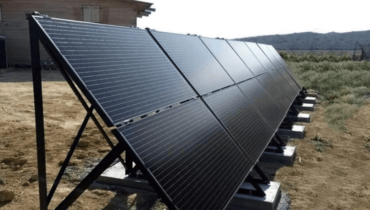Table of Contents
Understanding the Basics of a 1kW Solar System
Assess Your Energy Needs and Determine the Suitable System Size
Before you install a 1kW solar system, it’s essential to assess your energy needs and determine the system’s suitable size. The size of a solar system is determined by the amount of electricity you need, the size of your roof, and the amount of sunlight your area receives. A 1kW solar system can typically generate around 4-5 units of electricity per day, depending on the location, the type of panels used, and the weather.
Check Your Roof’s Suitability and Positioning
The next step is to check your roof’s suitability and positioning for installing the solar panels. Solar panels need direct sunlight to function correctly, so it’s essential to ensure that your roof gets sufficient sunlight throughout the day. A south-facing roof is ideal for solar panel installations as it receives the most sunlight throughout the day. Additionally, the roof should be strong enough to support the weight of the solar panels and the mounting structure.
Choose High-Quality Solar Panels and Components
Select the Right Inverter
An inverter is an essential component of a solar system that converts the DC electricity produced by the solar panels into AC electricity that can be used to power your home. It’s essential to choose an inverter that is suitable for the size of your solar system and compatible with the solar panels you have chosen. A high-quality inverter will ensure that your solar system runs efficiently and can last for years.
Invest in Quality Mounting Equipment
The mounting equipment is another critical component of a solar system. The mounting system should be strong and durable enough to support the weight of the solar panels and withstand harsh weather conditions. Additionally, the mounting system should be designed to prevent damage to the roof and ensure that the solar panels are securely attached to the roof.
Installation Process
Hire a Professional Solar Installer
Installing a solar system can be a complicated process that requires specialized knowledge and experience. It’s essential to hire a professional solar installer who can ensure that the installation is done correctly and safely. A professional installer will also be able to advise you on the best location for the solar panels and the most suitable equipment for your specific needs.
Connect the Solar Panels and Inverter
Once the solar panels and mounting equipment are in place, the next step is to connect the panels to the inverter. This process should only be done by a qualified electrician who can ensure that the wiring is done correctly and safely.
Test the System and Enjoy Your Savings
After the installation is complete, it’s essential to test the system to ensure that it’s functioning correctly. The solar installer should also provide you with a comprehensive guide on how to maintain the system and what to do if any issues arise. Once the system is up and running, you can start enjoying the benefits of solar energy and enjoy significant savings on your electricity bills.
Conclusion:
Installing a 1kW solar system is an excellent way to reduce your carbon footprint and save money on your electricity bills. However, it’s essential to follow the right steps and invest in high-quality components to ensure that your system functions correctly and lasts for years. By following the steps outlined in this guide and hiring a professional solar installer, you can install a solar system that meets your energy needs and reduces your environmental impact.

